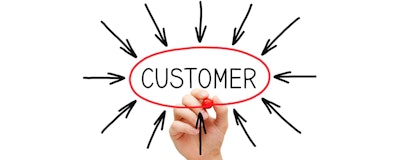
It began with a conversation. The CEO sat at his wide, glass-topped desk, sipping his coffee. “We just need more sales. It’s as simple as that,” he flatly stated. “Our organization has been through multiple transformations over the years. New processes have come and gone. New marketing trends have come and gone. I’ve seen them all.”
“Growth is about fundamentals. The fundamental truth that sales drives everything. Whether it’s a new market, new products, or new acquisitions, more sales solves all problems. It’s not complicated,” he remarked. “So we focus our efforts on pushing the sales force to identify what customer needs are, and what we can do to fulfill those needs.”
This all wasn’t a surprise. Every business school, venture school, and entrepreneurial program drives home the message of “increasing sales”. Yes, there’s no question that cash flow, cost reductions, capital injections and a myriad of other mechanisms play a part in organizational growth. If these methods didn’t work, they wouldn’t be riddled throughout hundreds of books, processes, courses and conferences.
The CEO, while not wrong, was overlooking the most critical component to growth — customers. While one might believe that sales and customers are one in the same, they are radically different. When we think about growth in terms of sales, we are focused on the product, service, or company offering. We are focused on quantity and not quality, and by quality, we mean profitability.
When taking the mindset of “we need more sales”, it centers on the premise that what you currently offer is your only source of profit, and that simply more of the same will generate the returns sought. In addition, while many companies look to identify new offerings to expand their product lines, these are frequently the same expansions that their competitors seek and actively fold into their portfolios. This limits not only innovation, but also true and sustainable differentiation. It becomes a race to be first to market, or first to the price bottom. Product offerings then convert to commodities or perceived commodities and diversification ensues – and the cycle starts all over again.
The customer isn’t part of the equation. With a focus on sales, the customer gets distilled into a generic market profile, including demographics such as industry, age, gender, location, previous buying behavior, and more. These aggregated macro-trends can provide high-level insights, but they only give you a singular and assumptive perspective. For example, you wouldn’t generally assume that all males are into sports, or all females are making decisions for household purchases.
But the problem is that many companies do. Customer segmentation can not only be extremely time-consuming, but resource-draining, and can be virtually impossible to capitalize on without the internal structure and capabilities to execute on the information. In addition, these types of broad generalities also often include many assumptions, most prominently the one that your customer segment needs what you sell.
It's not about sales, but about serving customers and their needs. Customer needs consists of much more than an experience, journey or simply satisfaction. While customers continually seek a positive, smooth experience and easy engagement with a company, service or product, a great experience cannot make up for the lack of the ability to fulfill a need efficiently, effectively, and painlessly..
 Andrea Olson, MSC, CEO of Prag'Madik
Andrea Olson, MSC, CEO of Prag'MadikWhen we design and architect products, services — and more importantly — organizations around the customer, it transforms not only our mindsets, but also the ability to innovate and differentiate more effectively.
Andrea's 20-year, field-tested background provides unique, applicable approaches to creating more customer-centric organizations. A 4-time ADDY award-winner, she began her career at a tech start-up and led the strategic marketing efforts at two global industrial manufacturers. In addition to writing, consulting and coaching, Andrea speaks to leaders and industry organizations around the world on how to craft an effective customer-facing operational strategies to discover new sources of revenues and savings. Connect with Andrea to access information on her book, workshops, keynote speeches, training or consulting. More information is also available on www.pragmadik.com and www.nodisruptions.com






















